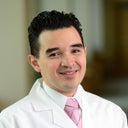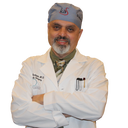Posted underBrazilian Butt Lift q&a
If I start to gain weight back will it go to my butt or will those fat cells no longer exist?
I am 2 weeks post op for the BBL. I noticed myself not eating as much this past week and losing weight. It’s always been really easy for me to lose weight rather than gain. I’m afraid that since I am losing it will effect my fat cells in my butt and they will be gone forever. So if I start to gain weight back will it go to my butt or will those fat cells no longer exist?
Answers (8)
From board-certified doctors and trusted medical professionals
Dr. Jaime S. Schwartz, MD, FACS

Dr. Jaime S. Schwartz, MD, FACS
Board Certified Plastic Surgeon
Answer
Dr. Ramsen Azizi, MD

Dr. Ramsen Azizi, MD
Board Certified Plastic Surgeon
Answer
Dr. Jeffrey Horowitz, MD

Dr. Jeffrey Horowitz, MD
Board Certified Plastic Surgeon
Answer
Dr. Donovan Rosas, MD

Dr. Donovan Rosas, MD
Board Certified Plastic Surgeon
Answer
Dr. Daniel Barrett, MD

Dr. Daniel Barrett, MD
Board Certified Plastic Surgeon
Answer
Answered on Apr 19, 2019
Answer
Dr. Vincent D. Lepore, MD (retired)
Dr. Vincent D. Lepore, MD (retired)
Board Certified Plastic Surgeon
Answer
More Brazilian Butt Lift Questions
See all Brazilian Butt Lift Q&AWE SEND PRETTY
EMAILS
What’s trending? Who’s turning heads? Which TikTok myths need busting? We’ve got you. No fluff, no gatekeeping—just real talk. Get our free, unfiltered newsletter.
